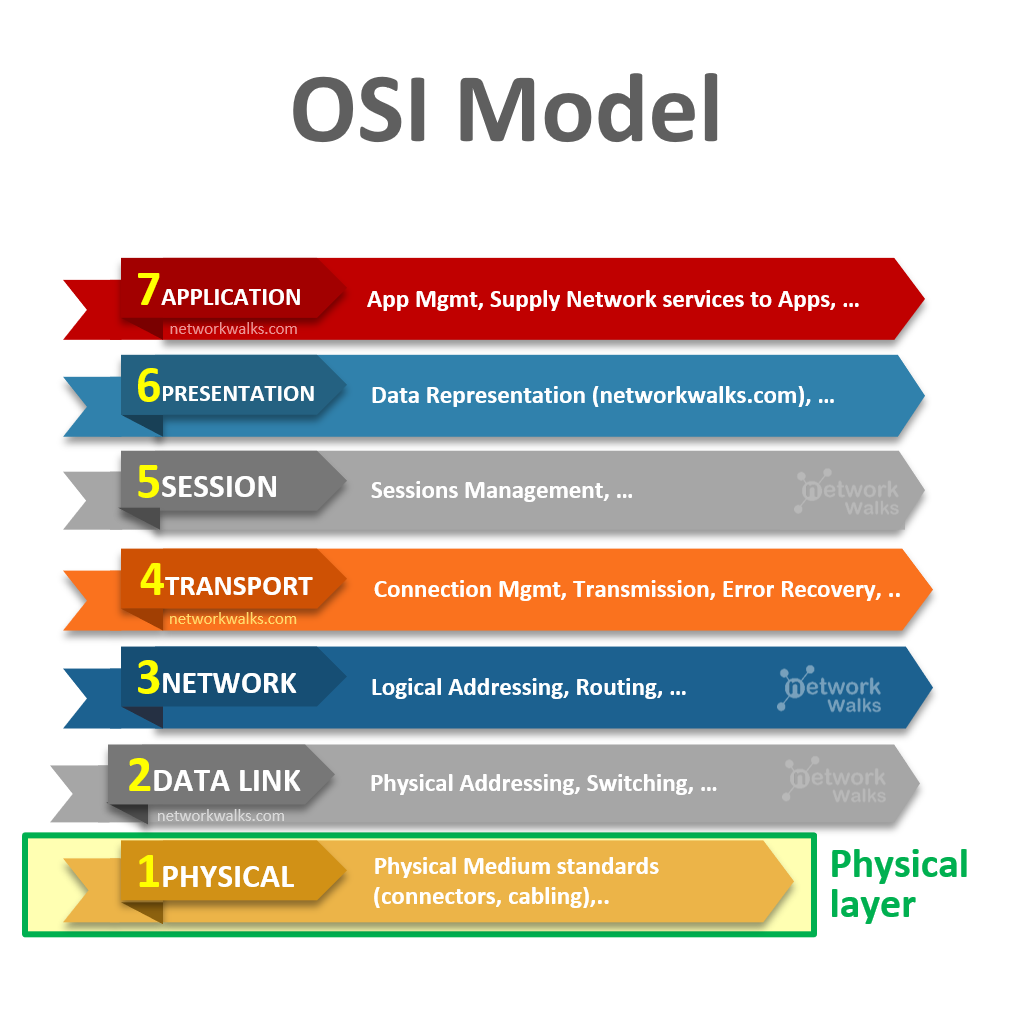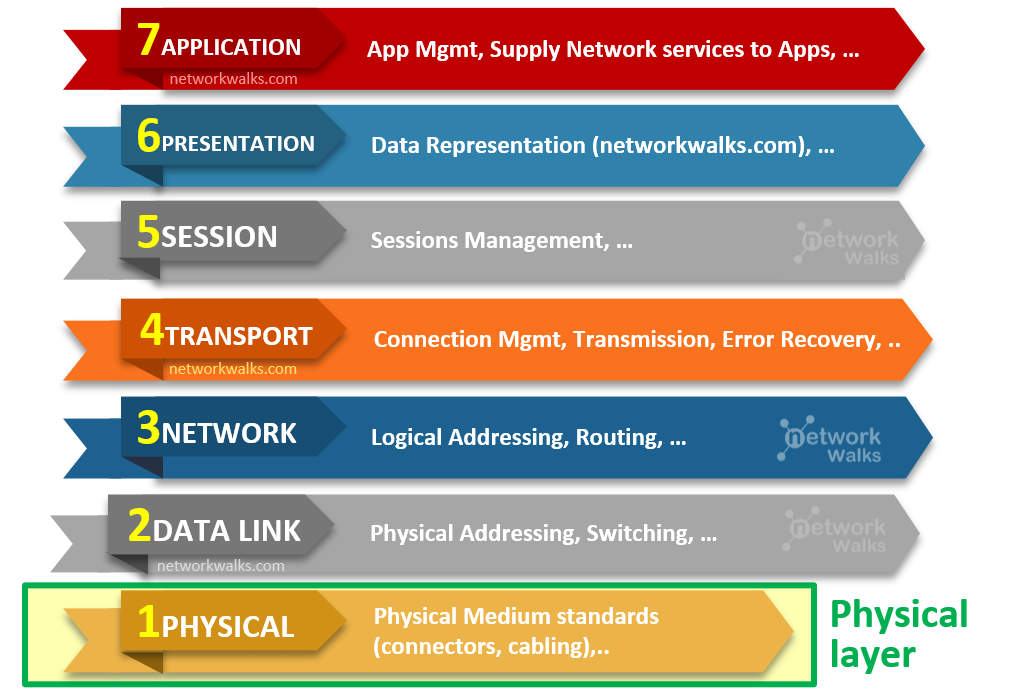 Physical Layer of OSI Model is the first layer in seven layers for simplification. It is responsible for transmission of data between sending & receiving devices. It also defines the means of transmitting raw bits over the transmission media. Physical layer addresses how the data is carried over the Physical media rather than logical data packets over a physical data link connecting network nodes. Each layer in OSI Model has its own duties & specific functions to perform so that it can support the layers above it. Below figure shows the position of Physical layer in the OSI Model:
Physical Layer of OSI Model is the first layer in seven layers for simplification. It is responsible for transmission of data between sending & receiving devices. It also defines the means of transmitting raw bits over the transmission media. Physical layer addresses how the data is carried over the Physical media rather than logical data packets over a physical data link connecting network nodes. Each layer in OSI Model has its own duties & specific functions to perform so that it can support the layers above it. Below figure shows the position of Physical layer in the OSI Model:

Functions & Duties of Physical Layer of OSI Model
Physical layer of OSI model is mainly responsible for standards of medium like connectors, cabling, Radio, Wireless & their technical specifications like signal levels, impedance, Optical levels, Bandwidth and frequency. It also addresses their mechanical specification like length, strength and dimensions. For example, Physical layer defines:- How many amperes of current & volts should be used to represent a 1-bit and how many for 0-bit?
- Whether 1 will present an ON or 0 will present an ON at both sides
- What is the total duration for a bit of zero or one?
- Whether transmission will be carried in both directions or only in one direction (duplex mode)?
- How many pins are there in the network connector and which pins are used for data & power supply?
Protocols at Physical Layer of OSI Model
Important protocols on Physical layer are listed in below:- WiFi
- USB
- Bluetooth
- RJ45
- Transmission Protocols like SDH, DWDM, OTN
- Microwave for air interface communications
- RS232 for Serial Communications
- ATM
- FDDI
- DSL
Network Equipment/Components at Physical Layer
Similar to protocols, each layer has associated equipment with it. Some important equipment that operates at Physical Layer of OSI Model are listed in below:- Hubs
- Repeaters
- NIC (Network Interface Cards)
- Modems
- Media Convertors
- Ethernet Cables
- Optical Fibers
- Patch Panels
Summary
Physical Layer is the first/lowest Layer in OSI seven layer model & it performs many functions while physical media standardization is the most important duty out of that. Important protocols at Physical Layer include WiFi, USB, Bluetooth , RJ45, SDH, DWDM, OTN, Microwave and RS-232, while the relevant equipment at physical layer include Hubs, Repeaters, NIC, Modems, connectors like RJ45, adapters, Ethernet cables like CAT5/CAT6 and Optical Fibers.
Now, test your knowledge on OSI Model using our free Quizzes & Cheat sheet resources for long term memory:
Networkwalks Summary Cheatsheets
Free Online Quizzes (Best for Cisco CCNA, Huawei HCNA, N+)Follow our Facebook Page & YouTube Channel for more updated Cheatsheets & Quizzes:
